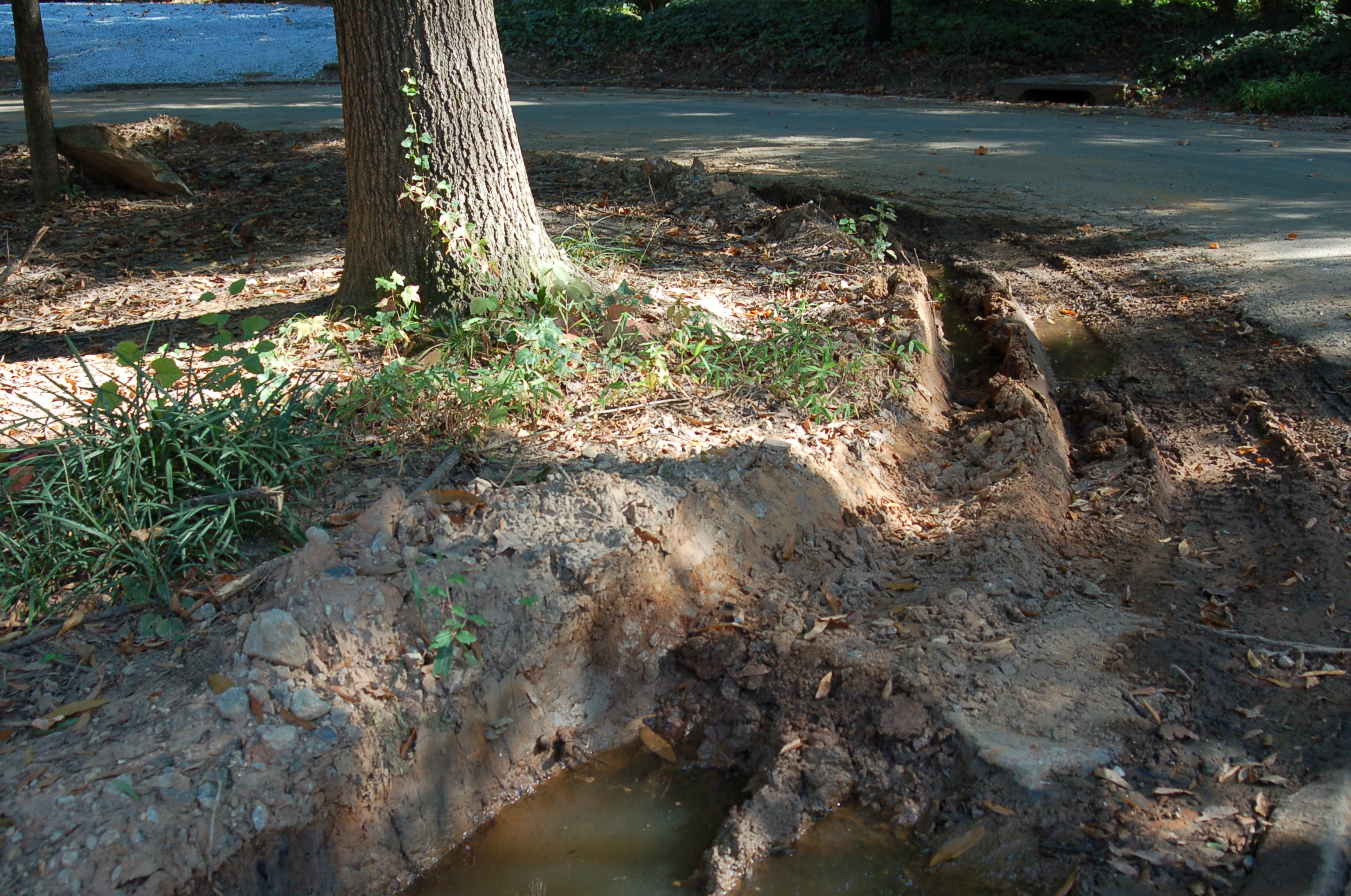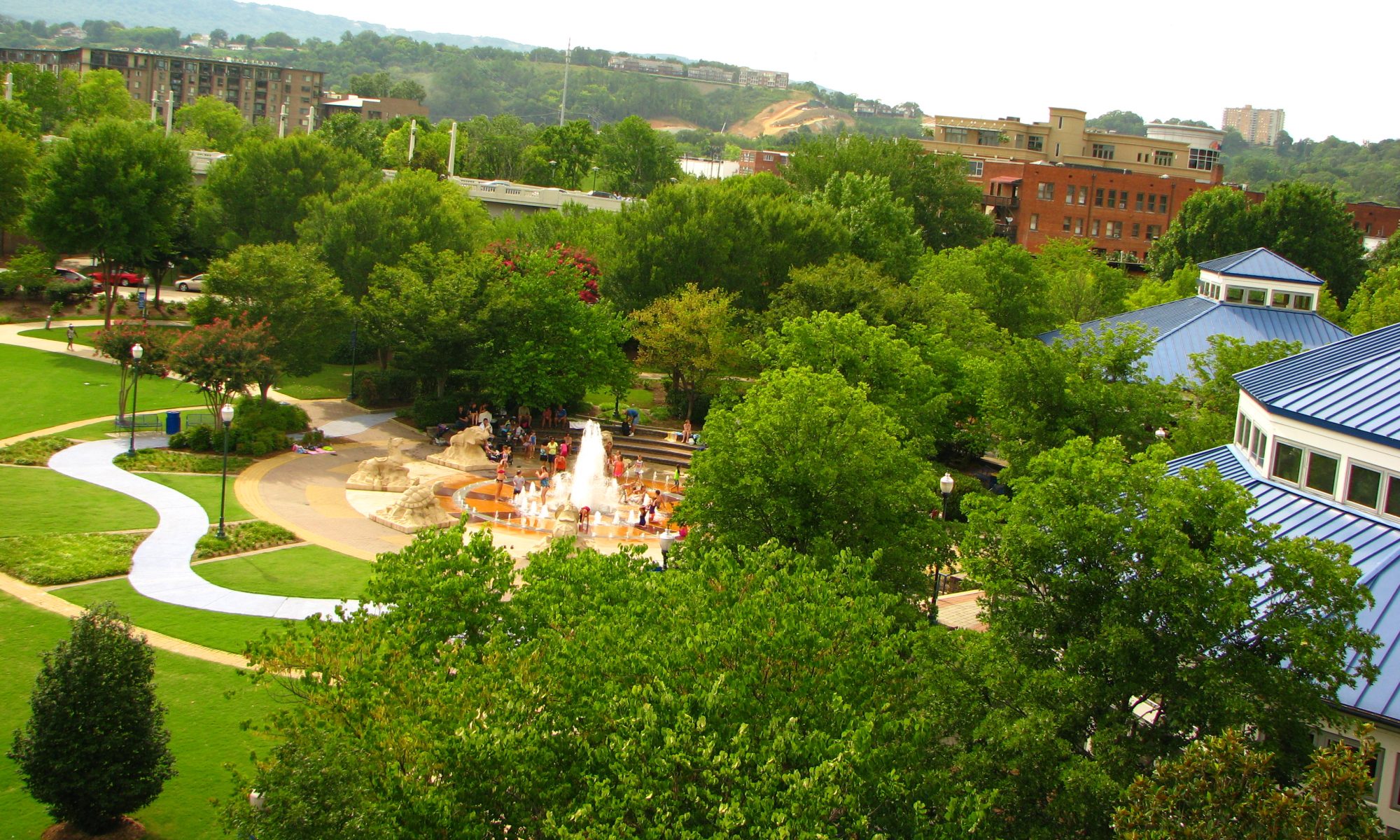Soils with excessive moisture have poor aeration because pore spaces are filled with water. Roots tend to grow near the surface in such soils. With poorly anchored roots, a tree is susceptible to wind throw. A tree may survive for a time, but the roots will eventually die and decay from lack of oxygen in the soil, leaving the tree without a way to absorb necessary water and nutrients.
Too much water in the soil is often caused by construction and planting practices, such as the improper use of irrigation systems. However, some locations are naturally susceptible to saturated soil because of soil type, terrain, heavy rains, flooding, or a high water table. For example, soils with high clay content tend to have more drainage problems than sandy soils because they are more easily compacted.
The following list describes some typical signs that drainage may be a problem at the site, along with techniques to prevent drainage problems.
Signs of Drainage Problems
- Water Movement –– A large amount of water flowing quickly over soil may indicate saturated soil conditions. This can also cause erosion.
- Standing Water — Water left standing after a rain may also indicate excessive moisture in the soil.
- Soil Type — The type of soil at a site influences moisture conditions. Sandy soils usually have a high infiltration rate with water moving quickly through, while clay soils tend to retain water.
- Browning Leaf Edges — Edges of leaves turning brown may indicate too much soil moisture.
- Root Decay — Waterlogged soils can cause root decay.
Preventing Drainage Problems
- Modify Construction Practices — When soil is moved or disturbed by activities such as grading, drainage patterns may be changed, affecting soil moisture conditions. Grade the soil during construction and landscaping so that no low spots are created at the planting site. Maintain the natural horizons during grading or filling so that infertile subsoil does not become the top layer of soil. Drainage problems can be avoided by minimizing the amount of soil compaction that occurs at a site. Keep debris, such as rocks and bricks, out of the topsoil to prevent interfaces or changes in soil texture. Impervious surfaces, such as concrete and asphalt, can inhibit water evaporation from a site. This can cause poor drainage and excessive moisture conditions.
- Break Up Hardpan — Belowground soil layers that are impervious to or restrict water infiltration can cause problems. Hardpan that occurs within 30 inches of the surface should be penetrated. Tractor-drawn subsoilers can be used for large sites, while digging and drilling holes often work in smaller areas.
- Use Care in Site Selection — For a location that is continually subject to excessive soil moisture, select a species that is tolerant of wet conditions. A site should have adequate soil volume to support the growth and development of the species selected. Avoid selecting a site where layers of rocks are near the soil surface, because there is little soil to absorb the water. Raised-bed planters are an option that elevates the tree’s roots out of the saturated soil. At sites with poor drainage, select a species that is tolerant of wet conditions.
- Adapt Planting Methods to Site Conditions — Plant the root ball so the crown is slightly above the soil level. Use coarse-textured fill material, such as sandy loam or loamy sand, to improve aeration and drainage. Do not use soil with a high clay content as fill material. Soil conditions that should be avoided include gravel under loam and sand on top of clay.
- Regulate Irrigation System — Setting irrigation systems to deliver water based on need, instead of time, will help prevent excessive soil moisture.
 |
| Photo Credit: Ed Macie |
Testing for Drainage Problems
Follow these steps to determine if there is a drainage problem (Gilman 1997):
- Dig a 12-by-12-inch wide hole and fill with water.
- Drainage is good if the water drains from the hole in an hour.
- If the water takes from several hours to a day to drain from the hole, drainage is fair.
- If water stands in the hole for more than a day, there is either a high water table or poor drainage.
Solving Drainage Problems
Excessive soil moisture can sometimes be solved by providing proper drainage for the tree, but this can be difficult and often expensive to correct. Proper planting procedures and selecting a species adaptable to the site are the best means for dealing with excessive moisture that cannot be corrected without drainage techniques. As a last resort, drainage can be improved by installing a drainage system such as a French drain or perforated pipe, redirecting the flow of water, or breaking up compacted soil, all depending upon the site conditions and available resources.
To learn this content and more for ISA and SAF credit, go to cfegroup.org!
To learn this content and more for volunteer hours and a certificate of completion, enroll in eLearn Urban Forestry at campus.extension.org!
Citation:
Gilman, E.F. 1997. Trees for Urban and Suburban Landscapes. Albany, NY: Delmar Publishers. 662 p.
By: Ed Macie, Regional Urban Forester, USFS Southern Region
